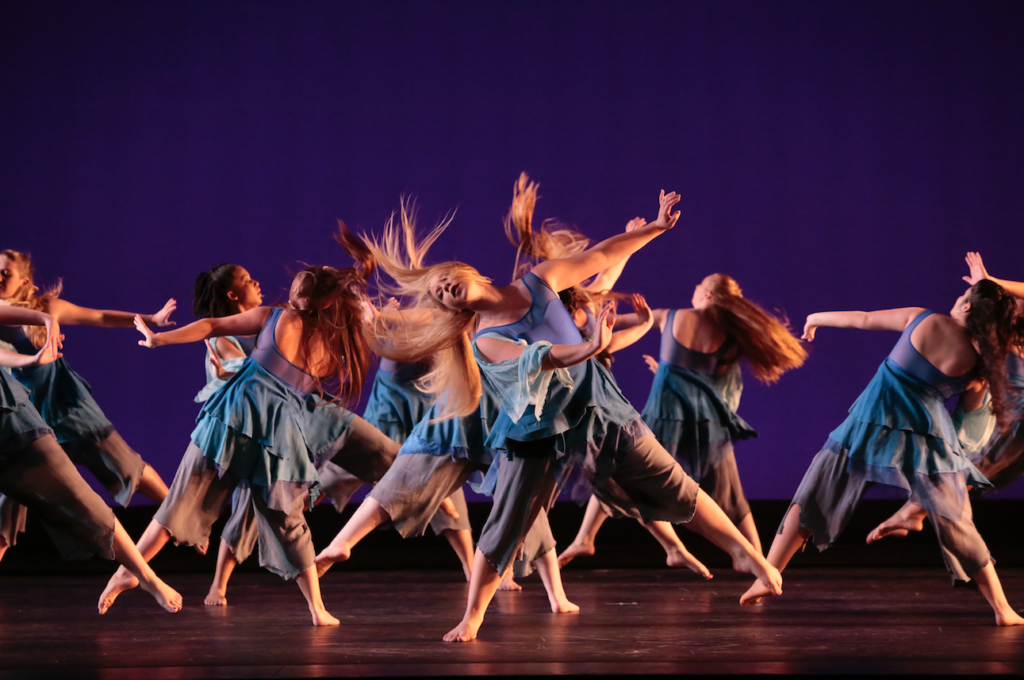
Faculty members from Hofstra’s Dance Department showed off their choreography over the weekend at the Black Box Theater for their Spring 2017 Dance Concert.
The show consisted of six pieces, beginning with “Rituals,” choreographed by Professor Robbie Cook. In my opinion, this was one of the most striking pieces of the show, as it truly expressed the idea of “group-think” and controlling nature of ritualistic practices. The dance involved groups performing repetitive and somewhat robotic moves.
Even when the groups on stage were broken up to do separate moves, they would eventually join together to perform the same steps. The piece ended with some of the dancers controlling others. They acted almost as puppeteers, controlling the arm movements and head positions of the dancers in front of them.
“Weaving,” choreographed by Professor Robin Becker, followed the first piece. Once more, the title of the piece was very clearly present within the movements of the dancers. Throughout most of the number, the three dancers weaved their arms together, twisting and turning across the dimly lit stage. Although the dancers began connected, the piece ended with them leaving the stage separately.
“Lux Aeterna,” by guest choreographer Adam Barruch, was another visually interesting number. Throughout most of the piece, the dancers did miming motions and appeared to be creating and carrying something. In the program, Barruch included a quote from social anthropologist Sir James George Frazer, which discussed how, in magic, man manipulates an established order of nature for his own ends. This quote, along with the chant-like music, seemed to establish a magical theme. Relating to the quote, the dancers appeared to be manipulating something that the audience could not see and then carrying pieces of what they created close to them, seeming to be afraid it would escape from their hands.
The show ended with “City Scraped,” choreographed by Professor Anita Feldman. This piece stood out among the rest, as it was not only comical, but also the only tap number. The other five performances – the aforementioned, as well as “Oh My Love” and “10:18” – were modern dance pieces.
“City Scraped” began with two tourists who changed positions on each beat created by the live band on stage. Other members of this “city” were then introduced, dressed in bright clothing and immediately inciting an enthusiastic energy on stage. The dancers were extremely expressive throughout the number, even establishing particular personality traits, like the girl distracted by her cell phone or the orderly businesswoman who barked directions at the band.
The rhythm in this number was created not only by the band, but also by the dancers, who used their tap shoes and even noises like sneezes and coughs to create a beat.
The band counteracted with rhythmic shouts at the dancers who “sneezed” in their direction. It was definitely the liveliest performance of the night and a great way to end the show.
The concert as a whole was short (only about 70-75 minutes long), which allowed the audience to get the most out of each piece and not feel overwhelmed by too many performances.
This was definitely not some glitzy dance recital; it was an artistic performance that truly showcased the talent of Hofstra dance students and faculty.
